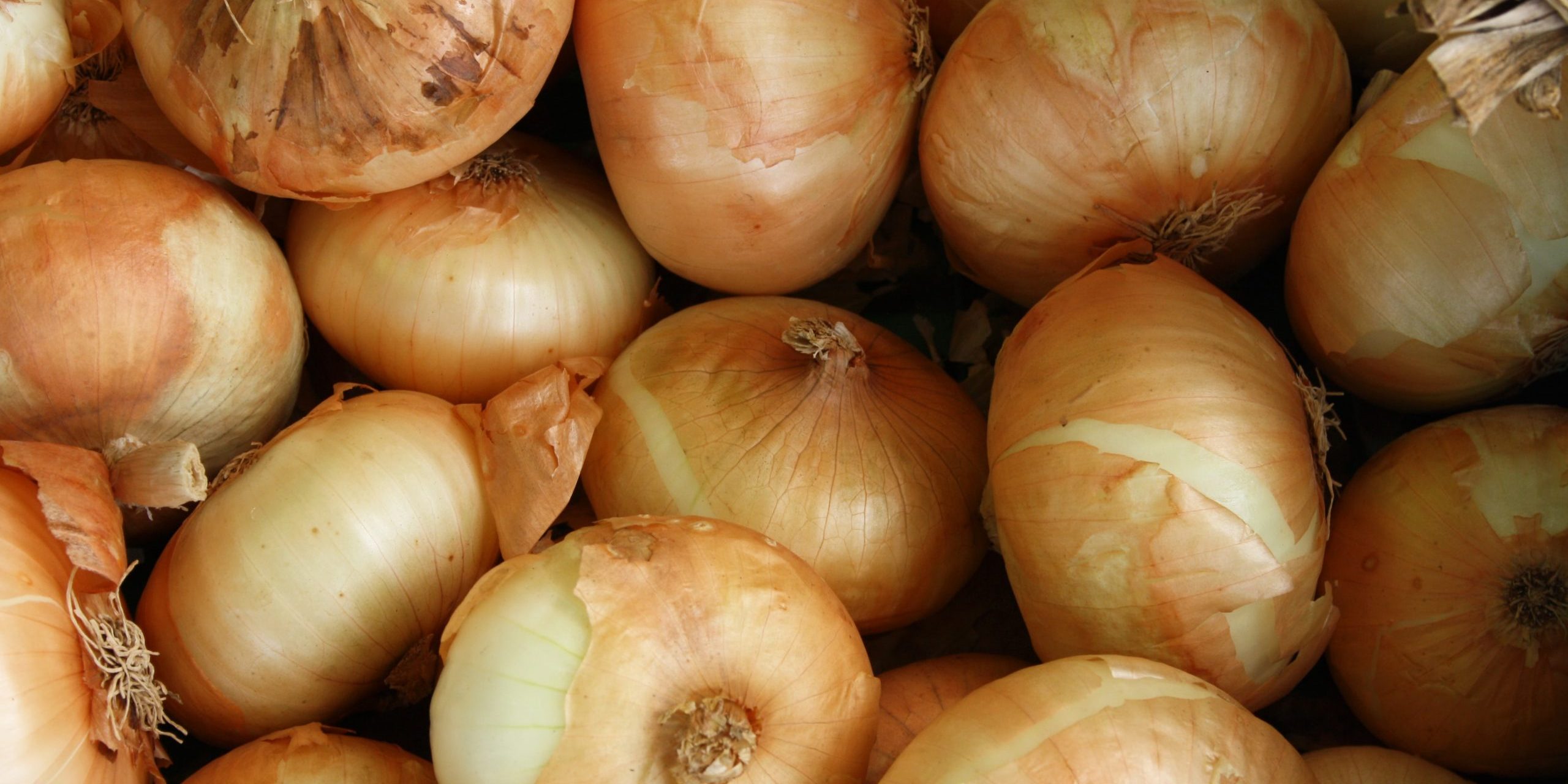HOW TO PLANT AN ONION SEED
Onions are a cool-season crop, easy to grow because of their hardiness. We carry onion sets, which can be planted without worry of frost damage and have a higher success rate than direct seed. Sets are onions that were harvested prematurely and stored over winter.
Another option we carry, in several varieties, are onion seedlings, which are fine to plant after frost danger passes.
Planting
Select a location with full sun where your onions won’t be shaded by other plants. Soil needs to be well-drained, loose, and rich in nitrogen; compact soil affects bulb development. Onions grow well on raised beds or raised rows at least four inches high.
Till in aged manure or fertilizer the fall before planting. Onions are heavy feeders and need constant nourishment to produce big bulbs.
At planting time, you can mix in some nitogen fertilizer, too, and side dress every few weeks until the bulbing process begins.
Seeding? Onion seeds are short-lived. If planting seeds indoors, start with fresh seeds each year. Start seeds indoors about 6 weeks before transplanting.
Plant onions as soon as the ground can be worked in the spring, usually late April or May. Make sure temperature won’t go below 20 degrees F.
For sets and transplants, space four to five inches between each plant and in rows 12 to 18 inches apart.
When planting onion sets, don’t bury them under the soil. Gently push them about halfway into the soil. If planted more deeply, bulb growth can be restricted.
Practice crop rotation with onions.
Care
Fertilize every few weeks with nitrogen to get big bulbs. Cease fertilizing when the onions push the soil away and the bulbing process has started. Do not put the soil back around the onions; the bulb needs to emerge above the soil.
Generally, onions do not need consistent watering if mulch is used. About one inch of water per week (including rain water) is sufficient. If you want sweeter onions, water more. Onions will look healthy even if they are bone dry, be sure to water during drought conditions. Make sure soil is well-drained. Mulch will help retain moisture and stifle weeds. Cut or pull any onions that send up flower stalks; this means that the onions have “bolted” and are done.
Pests
To control thrips—tiny insects about as fat as a sewing needle—take a dark piece of paper into the garden and knock the onion tops against it; if thrips are present, you will spot their tan-colored bodies on the paper. A couple of treatments with insecticidal soap kills them. Follow the package directions. Spray the plants twice, three days apart, and the thrips should disappear.
Onion Maggots: Cover your emerging onion crop with a fine mesh netting. Seal it by mounding soil around the edges. The onion maggot likes to lay its eggs at the base of plants, so the netting should prevent that. You should also keep mulch away because the insects like decaying organic matter, and make sure you completely harvest your onions as the season progresses. Onion maggots are usually a problem in very rainy periods, so these precautions may be unnecessary if you have a dry season.
Harvest/Storage
When onions start to mature, the tops become yellow and begin to fall over. At that point, bend the tops down to speed the final ripening process. Loosen the soil to encourage drying, and after a few days turn them up and let them cure on dry ground. Always handle them very carefully—the slightest bruise will encourage rot to set in.
Be sure to harvest in late summer, before cool weather. Mature onions may spoil in fall weather.
Allow onions to dry for several weeks before you store them in a root cellar or any other storage area. Spread them out on an open screen off the ground to dry.
Store at 40 to 50 degrees F (4 to 10 degrees C) in braids or with the stems broken off. Mature, dry-skinned bulbs like it cool and dry, and don’t store them with apples or potatoes.
http://www.almanac.com/plant/onions
[/vc_column_text][/vc_column][/vc_row]







